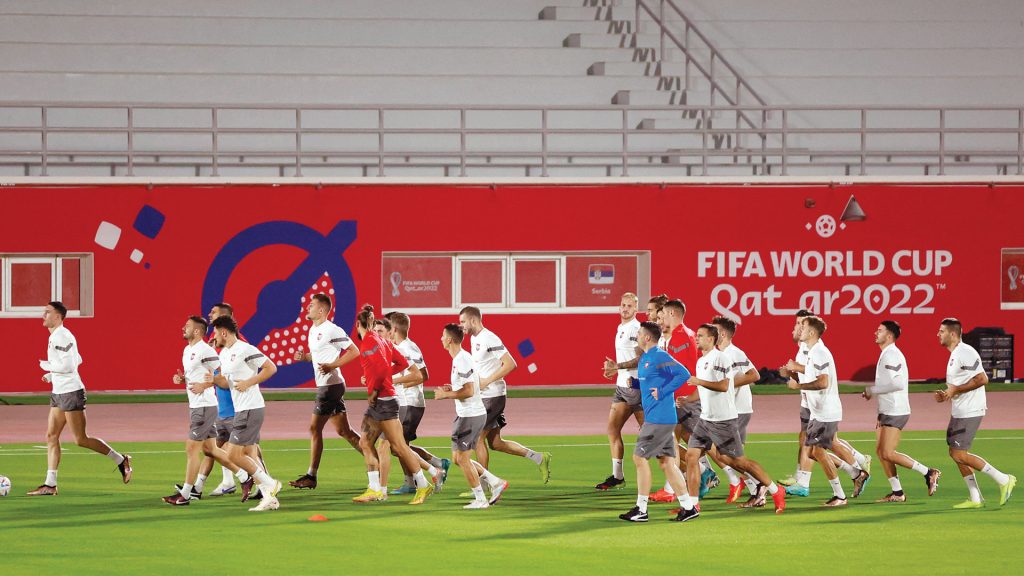In football, success is built not just on the field but also through meticulous talent identification and recruitment processes. This is where a scouting service plays a crucial role. From spotting hidden gems in youth leagues to evaluating established stars in professional tiers, scouting services are the backbone of building a competitive team.
If you’re passionate about the game and curious about how scouting in football operates, understanding the nuances of football talent scouting and the responsibilities of a football scout is essential. In this article, we’ll dive into the key aspects of scouting services, from the primary responsibilities to emerging trends, all while providing actionable tips for those interested in breaking into this exciting field.
What is a Scouting Service?
A scouting service in football involves the systematic identification and assessment of players to determine their potential for success at higher levels of competition. These services often work with football clubs, academies, and professional organisations to find the next big talent. Scouts play a critical role in this, combining traditional methods with modern data analytics to provide a comprehensive evaluation of players.
By leveraging a mix of in-person assessments and video analysis, scouts develop a holistic understanding of a player’s strengths, weaknesses, and potential fit within a team’s strategy. This ensures that clubs make well-informed decisions when signing new players, ultimately contributing to their long-term success.
The Scouting Process: A Step-by-Step Breakdown
Scouting is more than just watching games and taking notes; it’s a detailed process that requires sharp observational skills, a deep understanding of football tactics, and access to cutting-edge technology. Here’s a closer look at the steps involved in the scouting service:
- Initial Assessment:
- Matchday Observations: Scouts watch players during live games to get a sense of their skill level, decision-making, and in-game mentality.
- Training Sessions: Observing players during training helps scouts see their work ethic, coachability, and how they interact with teammates.
- Player Trials: Some scouts also conduct trials where players showcase their skills in a controlled environment, allowing for direct comparisons.
- Data Collection:
- Performance Metrics: Recording statistics such as goals, assists, successful tackles, dribbles completed, and pass accuracy.
- Physical Metrics: Speed, endurance, sprint distance, and recovery time are key data points that provide a picture of a player’s athletic capabilities.
- Psychological Attributes: Data is also collected on attributes like resilience, focus, and leadership skills, which are harder to quantify but crucial for success.
- Video Review:
- Detailed Footage Analysis: Reviewing game footage allows scouts to assess off-ball movement, tactical awareness, and positional discipline.
- Highlight Reels vs. Full Matches: While highlight reels can show a player’s best moments, watching entire matches provides a clearer picture of consistency and decision-making.
- Advanced Software Tools: Using software like Hudl or Coach Paint, scouts can break down footage frame by frame to analyse key moments in detail.
- Detailed Reporting:
- Comprehensive Player Reports: These include not only statistical data but also subjective insights about a player’s potential and fit for the club.
- Comparison with Peers: Comparing a player’s data to peers in the same league or position helps gauge their relative strengths.
- Recommendations: Based on the findings, scouts provide actionable recommendations for recruitment, suggesting how and where a player might best fit into the team’s strategy.

Why is Scouting in Football So Important?
The role of scouting in football has grown increasingly sophisticated with the rise of data analytics and global competition. Football clubs rely on scouting services for several reasons:
Identifying Talented Players Early On
- Developing Talent Internally: Discovering young talent before they reach their peak allows clubs to nurture and develop players in-house, reducing the need for expensive transfers.
- Lower Transfer Costs: By finding talent at an early stage, clubs can save money by avoiding the high fees associated with signing established players.
- Brand Loyalty: Players who come through a club’s academy often have a stronger connection with the club, which can translate into long-term loyalty.
Reducing the Risk of Costly Signings
- Avoiding Flop Signings: Thorough scouting can help avoid players who might struggle to adapt to the team’s playing style or the competition level.
- Cultural and Environmental Fit: Scouts assess a player’s personality and adaptability to ensure they will thrive in the club’s environment and city.
Ensuring the Club Stays Competitive
- Constant Talent Pipeline: Consistently scouting new talent ensures a steady pipeline of young, promising players, keeping the squad dynamic and competitive.
- Adaptability to Tactical Changes: Scouting can help clubs find players that match the evolving tactical demands of modern football.
Key Responsibilities of a Football Scout
1. Talent Identification
Talent identification is at the heart of a scout’s role, and it involves evaluating multiple aspects of a player’s game:
- Evaluate Technical Skills: This includes a player’s dribbling, shooting, passing, and ball control abilities.
- Assess Tactical Awareness: Understanding how a player positions themselves and anticipates the movement of others is critical.
- Physical Fitness and Stamina: Scouts look for players who can maintain high performance throughout a match, showcasing speed, agility, and endurance.
- Mental Toughness: Players who can handle pressure, adapt quickly, and maintain focus are highly valued. This is particularly important in high-stakes games.
2. Data Analysis
Modern scouting is heavily data-driven, allowing scouts to back their observations with hard numbers:
- Advanced Metrics: Scouts analyse key performance indicators (KPIs) like pass accuracy, Expected Goals (xG), and distance covered.
- Use of Software: Platforms such as WyScout, InStat, and Opta are popular among scouts for gathering detailed data.
- Data vs. Eye Test: Combining data analysis with in-person observations helps to form a more accurate assessment of a player’s capabilities.
3. Building a Network
Networking is crucial for a scout to stay in the loop about upcoming talents and industry trends:
- Connections with Coaches and Agents: Maintaining strong relationships with stakeholders is vital to gaining insights on emerging talents.
- Scouting at Tournaments: Youth tournaments and international matches are key venues for spotting rising stars.
- Collaborating with Other Scouts: Sharing information about potential prospects can help clubs make better recruitment decisions.
Types of Scouting Services in Football
1. Youth Scouting Services
Youth scouting services focus on identifying talent in youth leagues, high schools, and local academies, aiming to bring promising players into professional club academies. These scouts look for:
- Potential over Perfection: Young players might not be polished, but their raw talent and enthusiasm are key indicators.
- Work Ethic: Players who show a willingness to learn and improve are often seen as promising prospects.
- Long-Term Development Plans: Scouts assess players with a view to how they might develop over time, rather than just their current abilities.
2. Professional Scouting Services
These services focus on evaluating players who are already playing at the professional level, identifying those who can immediately contribute to a team’s success. Here, scouts prioritise:
- Consistency in Performance: Unlike youth players, professionals must demonstrate consistent skills across matches.
- Adaptability to Tactics: Scouts look for players who can adapt to different formations and styles of play.
- Immediate Impact: Clubs may require players who can fill a specific tactical gap, making scouting for professional-level talent crucial for short-term success.
3. Data-Driven Scouting Services
Data-driven scouting services specialise in using data analytics and video analysis to assess players’ performance, often supplementing in-person observations with statistical insights. This trend has become crucial for clubs with limited scouting budgets or those seeking to expand their scouting reach globally.
- Analysing Big Data: Large datasets can provide insights into trends and patterns that might be missed in traditional scouting.
- AI and Machine Learning: Some services are now exploring AI to predict player potential, using algorithms that analyse past performances to forecast future success.

How to Break into the World of Football Talent Scouting
If you dream of working in football talent scouting, it’s essential to understand that breaking into the field requires a blend of football knowledge, formal education, and strategic networking. Here’s how to get started in the scouting service industry:
1. Develop a Deep Understanding of the Game
Having a thorough understanding of football tactics and strategies is non-negotiable for a scout:
- Study Football Tactics: Understanding formations, player roles, and strategies helps scouts evaluate how a player fits into a team’s system.
- Analyse Player Movements: Focus on how players position themselves during defensive and offensive phases.
- Learn from the Best: Watch documentaries, read scouting reports, and study interviews with professional scouts to gain insights. Books like The Nowhere Men by Michael Calvin offer a glimpse into the life of football scouts.
2. Get Certified as a Football Scout
Certification adds credibility to your skills and provides structured learning paths:
- Courses from PFSA: The Professional Football Scouts Association (PFSA) offers various levels of certifications, which are recognised globally.
- Specialised Training: Some programmes focus specifically on football talent scouting, providing a structured understanding of the scouting process.
- Online Resources: Many online courses now offer flexible learning options, allowing you to study while working.
3. Network with Industry Professionals
Networking is crucial in the football industry, where connections can often be the key to new opportunities:
- Online Communities: Platforms like LinkedIn and specialised forums can connect you with seasoned scouts.
- Attend Football Workshops and Matches: These events are excellent opportunities to learn and network with professionals in the field.
- Reach Out to Clubs: Volunteering or offering to shadow experienced scouts can provide hands-on experience and mentorship.
Challenges in the Scouting Industry
While the role of a football scout is exciting and essential for a club’s success, it also comes with its own set of challenges. Understanding these obstacles is crucial for anyone looking to thrive in the field of scouting services.
1. Balancing Subjectivity with Data
- Traditional vs. Modern Approaches: Some scouts rely on gut instincts and experience, while others focus on data-driven assessments. Balancing these two approaches can be challenging, especially in clubs that are more traditional in their approach to recruitment.
- Overemphasis on Data: While data can provide valuable insights, it might not always capture a player’s mentality, leadership, or impact on the team’s morale. For example, a player might not have impressive statistics but could be a leader in the dressing room, making them valuable beyond their on-pitch contributions.
- Mitigating Bias: Scouts need to be aware of personal biases that could cloud their judgement, such as favouring a particular playing style or underestimating talent from less popular leagues.
2. The Pressure of Making the Right Recommendations
- High Stakes: A scout’s recommendation can significantly impact a club’s finances, team dynamics, and on-field performance. The pressure to identify the right players can be intense, as a bad recommendation might result in a costly mistake for the club.
- Limited Time for Decision-Making: Often, scouts have limited time to make assessments, especially during transfer windows when decisions need to be made quickly. This time pressure can affect the thoroughness of player evaluations.
- Expectation Management: Clubs often have specific expectations for the type of players they want, and scouts must balance those expectations with their own professional assessment, which might differ from management’s desires.
3. Navigating Competitive Scouting Markets
- Globalisation of Scouting: With advancements in video analysis and data analytics, clubs from all over the world now have access to information about players, making the competition for top talent fiercer than ever.
- Uneven Playing Fields: Scouts from smaller clubs often have fewer resources compared to those from wealthy clubs. This can make it challenging to keep up with rivals when bidding for promising players.
- Player Agents: In some markets, agents have a strong influence over player movements, making it challenging for scouts to get unbiased insights. Building good relationships with agents is crucial but can be difficult to navigate.
Emerging Trends in Football Talent Scouting
The world of football talent scouting is evolving rapidly, with new technologies and methods reshaping how players are evaluated and recruited. Here are some of the latest trends in scouting services:
1. The Rise of Data Analytics and AI
- Advanced Data Platforms: Platforms like StatsBomb and Catapult provide scouts with detailed analytics on a player’s performance, making it easier to identify strengths and weaknesses. These tools allow scouts to analyse data points like pressing efficiency, Expected Assists (xA), and passing networks.
- AI-Driven Player Predictions: Some clubs use AI algorithms to predict a player’s future potential based on historical data and performance trends. This can help clubs identify emerging talents before their market value skyrockets.
- Remote Scouting Using Data: For clubs with smaller budgets, remote scouting using data and video analysis can be an efficient way to track players globally without the need for extensive travel.
2. Scouting for Specific Tactical Roles
- Position-Specific Scouting: Instead of looking for all-around talents, many scouts now focus on finding players who fit specific tactical roles within a team. For example, a coach might need a left-footed winger who excels at cutting inside or a defencive midfielder with high ball recovery rates.
- Player Profiling: Scouts build detailed profiles of players that include their suitability for various tactical systems, such as a 4-3-3 or 3-5-2. This helps clubs target players who can seamlessly integrate into their playing style.
- Versatility as a Key Metric: With modern football’s emphasis on tactical flexibility, scouts look for players who can perform in multiple positions, making them valuable assets for any squad.
3. Video-Based Scouting and Global Talent Pools
- Widening the Scope: Video analysis allows scouts to track players in remote regions where live observation might be impractical. This has opened up new talent pools in countries like Japan, South Korea, and emerging African football nations.
- Building Scouting Networks in New Markets: Many clubs now set up partnerships with local scouting services in South America, Africa, and Asia, creating a pipeline for identifying talent in underrepresented markets.
- Leveraging Social Media: With platforms like YouTube and Instagram, scouts can access highlight reels and game footage posted by players themselves. This trend has made it easier to get a first look at a player’s potential before investing in a full scouting trip.
Real-Life Success Stories in Scouting
The world of football talent scouting is filled with stories of players who were discovered under the radar and went on to become superstars. Here are a few notable examples:
1. N’Golo Kanté – From French Lower Leagues to World-Class Midfielder
- Scouted by Leicester City: N’Golo Kanté was playing in France’s second division when he was discovered by Leicester City scouts. Despite his small stature, scouts recognised his incredible work rate, tackling ability, and tactical intelligence.
- Impact on Leicester City: Kanté’s presence in midfield was instrumental in Leicester’s historic 2015-2016 Premier League title win, showcasing the importance of thorough scouting.
- From Underrated to Essential: Kanté’s Storey emphasises how scouts can spot talent that may not fit conventional molds but possesses unique attributes crucial for team success.
2. Riyad Mahres – A Hidden Gem from France
- Discovered by a Scout Watching Another Player: Mahres was initially overlooked because of his lean physique. However, his technical skills and flair caught the attention of scouts from Leicester City when they were scouting a different player.
- Climbing to the Top: Mahres’s success with Leicester, including winning the Premier League title, led to a high-profile move to Manchester City, highlighting how scouts can find world-class talent in unexpected places.
3. Alphonso Davies – The Rise of a Canadian Talent
- Scouted from MLS to Bundesliga: Bayern Munich’s scouts spotted Alphonso Davies playing for Vancouver Whitecaps in MLS. Despite the lower profile of the league, his speed, dribbling, and versatility were apparent.
- Rapid Development in Europe: Davies quickly adapted to European football and became one of Bayern’s key players, demonstrating the value of scouting in less traditional football markets like North America.
- Spotting Potential Beyond Statistics: Davies’ Storey highlights how scouts need to look beyond immediate statistics to find players with the potential to thrive in different competitive environments.

Tools and Technologies Used in Football Scouting Services
Modern scouting relies on a combination of software tools, data platforms, and video analysis systems to deliver accurate assessments. Here’s an overview of some of the most commonly used tools in the industry:
1. Video Analysis Platforms
- Hudl and WyScout: These platforms allow scouts to access video footage from leagues around the world, breaking down individual player performances and specific match situations.
- Coach Paint: This tool allows scouts and coaches to annotate video clips, highlighting key moments and tactical insights.
- Tactical Cameras: Some clubs use tactical cameras placed around stadiums to provide unique angles for in-depth player analysis.
2. Data Platforms
- Opta and InStat: Widely used by scouts, these platforms provide detailed statistics on players, including passing accuracy, defencive actions, and offencive contributions.
- Catapult GPS Trackers: GPS tracking devices provide data on a player’s movement during training and matches, offering insights into their stamina, speed, and work rate.
- AI and Machine Learning Platforms: Clubs like Brentford FC and FC Midtjylland use data-driven models to scout players, finding value where others might see risk.
3. Virtual Scouting and AI Analysis
- Remote Scouting with AI: Using AI tools like Scout7, scouts can search for players based on specific criteria, such as height, preferred foot, and playing style, filtering thousands of players quickly.
- Predictive Analytics: Some clubs use predictive models to anticipate a player’s development curve, helping them make decisions about which young players might become stars in the future.
- Sentiment Analysis for Player Psychology: Advanced AI tools can also analyse social media interactions to assess a player’s behaviour and mentality off the pitch.
The Future of Football Talent Scouting Services
As football continues to globalise, the role of scouting services will only grow in importance. From leveraging advanced data analytics to discovering players in remote corners of the world, scouts will be key to building winning football teams. By combining traditional football wisdom with cutting-edge technology, the next generation of scouts will help shape the future of the sport.
For aspiring scouts, the key is to remain adaptable, continuously learn, and embrace new technologies while staying true to the core principles of scouting in football. With the right blend of passion, knowledge, and connections, a career in football scouting can be both rewarding and impactful.
Want to develop your scouting skills?
Take a look at resources and courses provided by the PFSA to develop your approach to football scouting using the link below.

